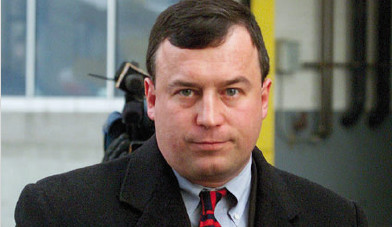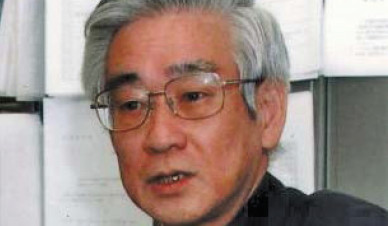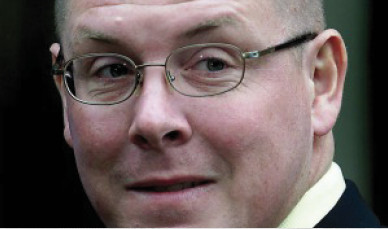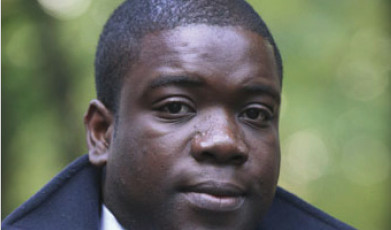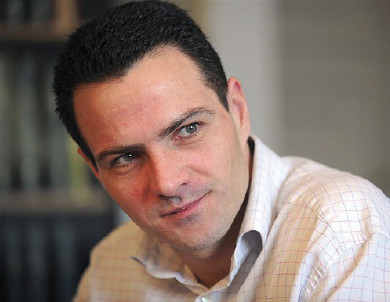5 of the Worst Rogue Traders in History
Feb 28, 2013 at 12:47 pm in General Trading by Dave
Do you get frustrated when you make a loss in the markets? Have you ever lost £1000? Maybe £10,000? Forget about it. That’s absolutely nothing when compared with the following traders who lost fortunes, albeit in most cases not their own money but their employers and, unfortunately for them, without their employers’ consent!
Many of these traders shocked the world by virtue of the sheer magnitude of their losses and all ended up in prison. The one common theme from each of the trader’s stories is hubris – an all too common human emotion. That coupled with greed, ego and inability to accept that they are wrong were the other common ingredients.
I’m sure many of you who are also market participants can recall tales of traders that simply couldn’t accept that their view was wrong and decided to “take on the market”, inevitably ending with disastrous consequences. I guess we have all done it to a degree and it is part of the learning curve of trading in the markets – knowing when to fold you cards. What marks these five traders out is quite simply the sheet magnitude of the money lost.
A rogue trader is an authorised employee who, through circumstances and particular personality traits, proceeds to engage in unauthorised trading; an employee who decides unilaterally to expand his mandate and trade without bounds. The common theme amongst these traders is not, ironically, the singular desire to enrich themselves, but, strangely, the need for recognition and adulation. It seems they want to be revered by their colleagues.
One way or another, however, when trading becomes gambling, the final result is almost always disastrous – a salutary lesson for spread bettors and traders who leverage themselves to the hilt and cannot accept they are wrong – the odds are stacked against such a strategy. Let’s take a look at some of the worst rogue traders in history…
John Rusnak
John Rusnak was hired in 1993 as an experienced currency trader by AllFirst Bank, a subsidiary of Irish Allied Banks.
With the Nikkei bubble having just burst, Rusnak reasoned that the Japanese Yen would start rising. He thus proceeded to open what are called forward futures contracts betting on the Yen rise. So far so good. What he failed to do, however, in breach of his employer rules, was to hedge that position. Unfortunately for him a crisis in Asia occurred in 1997, prompting a long slide in the Japanese currency, and a tub thumping loss for him. Instead of stopping at that point, he decided, as true gamblers do, to embark upon a double-or-nothing strategy and compound matters further by faking his activities, introducing non-existent trades into the system and, in an echo of Nick Leeson’s actions, using special accounts that he managed to keep from his supervisors for some time. In fact, enough time for his losses to grow to an enormous $691 million.
After the losses were finally discovered in 2002, Rusnak was sentenced to seven and a half years in prison, although he spent a little less than six years in jail and is a free man now. He didn’t profit personally from this trade beside his salary.
Toshihide Iguchi
Toshihide was born in Kobe, Japan, a city that would also come to be at the epi-centre of Nick Leeson’s disgrace some years later as we will see…
Toshihide was a trader of the Japanese Daiwa Bank, working as a portfolio manager, mainly trading in US Treasury Bonds at its New York subsidiary.
In early 1983, Toshihide’s losses from bond trading were contained at $70,000 — a manageable loss that anyone could have incurred. Unfortunately for Toshihide, and very probably partly due to the Japanese culture as well as trying to keep his job, he decided to hide his losses. In an attempt to recover the relatively small loss, Toshihide continued to average his position, accumulating ever increasing losses until it reached a point where the loss was so big that he was concerned he could actually be putting the whole bank at stake!
In a moment of contrition, albeit much too late, he decided to write a letter to the President of Daiwa Bank in Japan detailing the enormity of the situation. Some eleven years had passed since the first hidden loss of $70,000 and which had turned into $1.1 billion! He was ultimately sentenced to four years in prison in 1995 and was released in 1999 and now dedicates his time to writing and teaching English in Kobe, Japan.
Nick Leeson
Perhaps the most famous of all the “rogue traders” is the man who broke Barings Bank — none other than Mr Nick Leeson. Everything seemed to be rosy for Nick when he was transferred from the London office with his then beloved wife Lisa (who would come to leave him while languishing in jail) to Singapore to trade on the SIME. Leeson’s role was what is called “index arbitrage”. For anyone who is not familiar with what “arbitrage” is, the standard description is “riskless profit”. The irony of Leeson’s job title and his eventual losses would not be lost on him many years later…
According to Leeson in his autobiography, he describes the first fraudulent trades in the infamous “fives 8’s” account (8 being a lucky number in China) as a consequence of attempting to cover up the mistakes of a local female colleague. Initially, he managed to trade his way out of the mistake and actually book a profit and, if greed hadn’t gotten the better of him, that would have been the end of the matter.
Sadly for him and Barings shareholders, the making good of the losses on the five 8’s account gave way to the realisation that Leeson could conduct unauthorised trades and pull the wool over the directors in London. Of course we all know what’s coming next…
Leeson accumulated some decent profits initially in the secret account and so continued to enjoy a revered standing within the bank who came to rely on him to produce the required profits in order to dole out the usual year-end bonuses. A case rather of ‘he who is blind is ignorant’. Quite simply, his superiors in London didn’t give a damn how he made the profits, as long as he actually did. Greed was a common thread throughout the bank it seems.
Of course, the run of profitable trading came to a juddering halt, exacerbated in large part by a stroke of very bad luck for Leeson (and the people of Kobe) when the Kobe earthquake hit. By the end of 1992 he had a loss of £2 million, but come 1994 this had ballooned to £208 million! As the losses snowballed, Leeson resorted to the usual gambler’s trick of averaging down, simply buying more and more futures in the hope the market would turn around. We’ve all been there, eh? Just not on Leeson’s scale!
On January 17, 1995, the Kobe earthquake almost liquidated him. His overnight bet against volatility simply blew up in his face and he was staring down a loss of £827m. The enormity of this must have dawned on him and he realised that the cash transfers from the London office that he had managed to explain as client positions being covered, were likely to be no more. In short, the coffers were bare. When the curtain finally came down his loss was some £827m. After an attempt to disappear and avoid the music, he was arrested in Germany and returned to Singapore where he was ultimately sentenced to six years in the notorious Changi jail. Whilst incarcerated his run of bad luck continued with his wife remarrying and him developing colon cancer. Barings Bank was brought down and finally sold for the symbolic price of one British pound.
Kweku Adoboli
Kweku Adoboli is another rogue trader who it seems made no money for himself, but was quite simply looking for the adulation and respect of his fellow traders at UBS. He did however lose money personally on his spread betting account with IG Index!
Working within the Global Synthetic Equities trading team of UBS and, again. In similar echoes to Mr Leeson’s escapades, Adoboli’s role was supposed to be that of putting together “baskets” of equities in various geographic regions to capture relatively small (but frequent) discrepancies between the representative futures indices — again, a form of arbitrage.
Adoboli placed a number of unauthorised trades in the S&P 500, EuroStoxx and other main indices and eventually racked up losses of $2 billion. Adoboli maintained his innocence right up to trial and insisted that his superiors knew what he was doing and that he was being used as a scapegoat for the banks bad trading. Whatever the truth, to us, it is another example of senior management turning a blind eye whilst the traders get up to mischief. As to where the so called risk departments are that seem not to understand simple double entry accounting, well, that’s worthy of an article in its own right…
During Adoboli’s case, pressure on traders has been referred several times in court as one of the triggers for the risky behavior. Our belief is if you can’t stand the heat, then stay out of the kitchen and remember, if you go down a fraudulent and crooked path, then inevitably you will always pay the price.
Jerome Kerviel
Working at French bank Societe General, Jerome Kerviel tops our list of rogue traders in pure monetary terms by virtue of him racking up an inordinate loss of almost €4.9 billion. Kerviel was, yes, you know what’s coming, working within “arbitrage” where he was supposed to be buying a portfolio of securities whilst simultaneously selling another one to capture a small riskless profit. The problem for Kerviel is that it seems he “forgot” to implement the second part of the arbitrage trades — selling a portfolio to offset the risk, and in fact just went “naked” in his trades.
At first, and again in common with most of these rogue traders, everything went very well and it has been said that as of January 2008, he was up €1.4 billion. Now, here’s where we believe management and the so called “risk managers” are almost equally culpable — the 1.4bn of profits can’t have been hidden or if they were, then it is a failure of their accounting and trade reporting system that needs addressing; and if they weren’t, then, again, turning a blind eye to “unexplained” profits seems to be a big factor here.
In a futile attempt to avoid being caught, Kerviel supposedly sold many of the securities within the portfolio baskets at small losses in order to pretend that he was offsetting his trades. Unfortunately for him, the bank uncovered the scheme in January 2011 and quickly sold his portfolio and so crystallising Kerviel’s legacy as one of the biggest losses ever incurred through rogue trading — a cool €4.9 billion.
Kerviel was ultimately convicted by court and sentenced to prison, but he has always stated that he was not the only one who was involved with the trades. With the total amount of trades summing to over €50 billion — more than the bank’s actual capital — we have some sympathy with this assertion, either that, or he had to be a genius to have been able to work alone.
A Word on Dr. Copper
Regular readers will recall the inclusion of the infamous Hanamaka (or Dr Copper as he is also known) in our piece last month on commodity cornering. Hanamaka is included here given the magnitude of his losses, some $2.6bn, but his trades would very unlikely have been unauthorised. He cornered the market in copper for ten years, something that couldn’t have been done without consent and support from his firm and ultimately ended up losing $2.6 billion.
A Final Word
It seems the following ingredients are common in all these cases — a requirement on the traders part to be respected and revered by his peers; greed, largely on management’s part who are prepared to turn a blind eye when things are going well; and, in many cases, a sheer lack of understanding of the businesses they are operating by senior management. The “old boy’s network” frequently works to shareholders’ disadvantage, but no more so than in the financial industry where the sharp young bucks run rings around senior management.
Of course, each of these individuals had persona extremes that prompted them to go that extra bit further and run up the losses of such magnitude, but, again, it is very likely hard to avoid rogue trader episodes in the future as many of the personality elements that a trader requires to have (and that have been compared to psychopathic traits) were present in these individuals. Perhaps the only way to really stamp it out is to ensure that management and risk managers really understand what their traders are doing!
Article reproduced from the March 2013 edition of Spread Betting eMagazine


